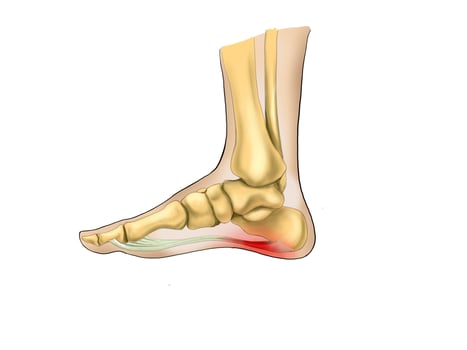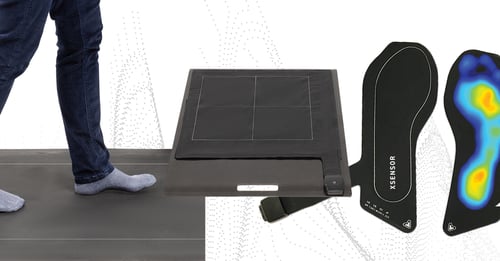
Pressure Points for Plantar Fasciitis: Insights into Relief Options
Plantar fasciitis is a painful condition in which the thick band of tissue that runs across the bottom of the foot becomes inflamed. Specifically, this tissue connects the toes to the heel bone. Often, those with this condition experience stabbing pain. It’s often most noticeable with the first steps in the morning. Better understanding pressure points for plantar fasciitis may enable a better level of relief and even prevent the onset of those painful steps.
Better Understanding Plantar Fascia and Why It Happens
Though this is a common condition, plantar fasciitis pain can be debilitating for many people. It can occur in just one or both feet, often also causing pain at the heel. Often, it is so significant that just walking can be incredibly painful. The plantar fascia is an important component of the function of the foot. It helps to support the arch. However, it can become weak and swollen. This may be from straining the tissues or due to inflammation built up over time from injuries.
Runners are most likely to suffer from it, but it can happen to anyone. It’s most common in people who are between the ages of 40 and 60. Those who are overweight, spend long hours on their feet or have an abnormal pattern, such as flat feet or high arches, are more likely to suffer from it.
A good way to understand plantar fasciitis is to think of it as a bowstring. It works in the same way to support the arch of the foot. When a person walks, this band of tissues works to absorb some of the shock from each step. However, sometimes the amount of pressure, stress, and tension on that bowstring becomes too much. When that happens, small tears develop in the tissues. And, when that happens over and over again, due to tearing and stretching, it can inflame the fascia, causing the pain you feel.
The pain that develops is significant and it doesn’t go away for many people without treatment. The heel pain, discomfort with every step, and feeling of sharp pinpoint injury can be hard to overlook. The good news is there is help for this type of condition that doesn’t involve invasive procedures.
Trigger Point Therapy for Plantar Fascia

Trigger point therapy may provide some of the most effective treatments and relief for plantar fasciitis inflammation and pain. This type of treatment isn’t just for short-term pain relief, though that is a common misconception. When used properly, this type of therapy can provide relief from plantar fasciitis even over the long term.
Trigger point therapy, which has long been referred to as acupuncture point therapy in traditional Chinese medicine, may be a good solution even for those who have experienced significant pain and chronic conditions.
From a simplistic view, trigger points are locations throughout the body that, when pressure is properly applied to them, can lead to changes in the function of the body. There are a number of trigger points located throughout the body. Those related to plantar fasciitis pain typically include the:
- Plantaris
- Quandratus Plantae muscles
- Gastrocnemius
- Soleus
Quite often, this type of pain comes from the calf muscles. However, this condition is a myofascial meridian problem. What does that mean? In short, it is not specifically a foot problem or a heel problem. To find relief, it is critical to find the source of the problem. For most people, that comes from the plantar flexors being too tight. That tightness leads to the tendinous attachment of the Achilles tendon at the location of the heel.
To achieve pain relief, it’s important to focus on the specific trigger points (those in the calf) that can provide relief to these strained and taut muscles. A pinkly ball release may offer some help in that way, applied directly to the trigger points. Often, these points are located along the fascia or muscle and feel tender when touched.
How can this relieve the intense pain you have? In this type of medicine, there is a belief that Qi is stuck when there are areas of pain. Qi is energy or sometimes referred to as life force. It gets caught in these areas, leading to a lack of blood flow and energy flow through the body. From a more modern medical view, these are areas of adhesions. They are located in the muscles or the connective tissue. In either situation, when you apply pressure to them, trigger points are tender and sometimes painful.
To relieve the pain, it is often possible to roll out the trigger points located in the calf muscles. When this happens, fascia pain in the foot and heel is relieved.

Prevention and Relief
While it is possible to find relief from this type of pain through myofascial release, it’s also important to monitor conditions that lead to this type of pain. In other words, prevention is the best type of medicine. There are tools available that may offer some help. For example, Intelligent Insoles | Pro is a type of measurement system for plantar pressure and gait. It can help to capture data about how the foot is being used and how consistently it is being used. A big component of why plantar fasciitis is a common condition is the improper movement of the foot and its structure.
Another tool that can provide insights is XSENSOR’s Walkway and Stance pad. These sensors help gather data that can help to pinpoint if the foot is not functioning correctly or if there is too much pressure present. This system accurately analyzes walking and striding pressure at the plantar fasciitis, helping to make changes when needed.
With a better understanding of pressure points for plantar fasciitis, it becomes possible to find significant relief from plantar fasciitis pain. Yet, this may involve the use of more advanced insight into the way the foot is walking and what is causing the discomfort. For athletes, especially, learning how to reduce the risk of this condition developing or worsening is critical. This type of technology enables that.
While trigger point therapy may offer some relief fast from pain, better understanding this condition, why it happens, and what can be done to treat it is critical for those struggling with plantar fasciitis. Seek out treatment and learn more about solutions today.


